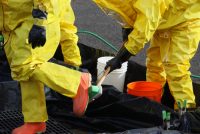Train Workers to Leave Job Dangers at Work
Some of the dangers your workers face at work can follow them home … if they’re not trained to leave such dangers at work. Today’s Advisor provides you with a training outline for this important topic. Here is an overview of what you need to know to put together an effective training session. Background Who […]









